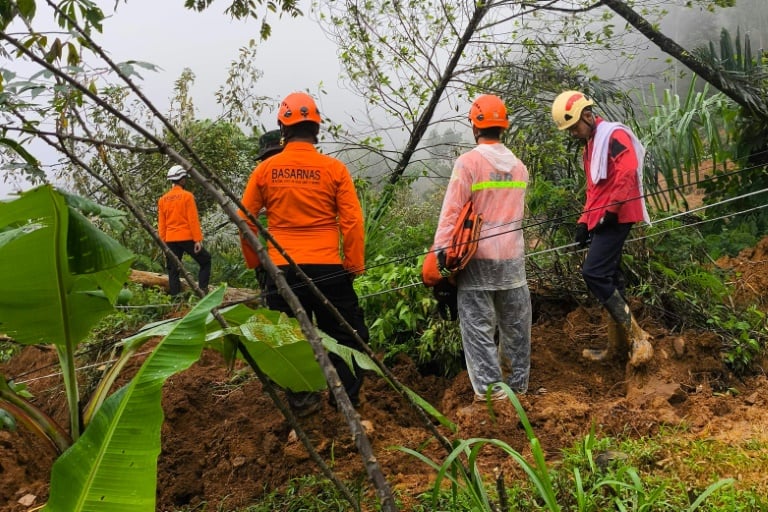News Flash
News Flash

PEKALONGAN, Indonesia, Jan 22, 2025 (BSS/AFP) - Hundreds of rescuers were
searching through thick mud and debris to find survivors Wednesday after a
rain-triggered landslide in Indonesia killed at least 17 people and left nine
missing.
Intense rainfall in a mountainous area near Pekalongan city in Central Java
province sparked the landslide on Monday, collapsing bridges and burying cars
and houses.
Search and rescue agency Basarnas said in a statement Wednesday that the toll
remained unchanged from Tuesday at 17 dead, nine missing and 13 people
injured.
But another body was found, Mohammad Yulian Akbar, a local official told AFP
later Wednesday, giving a higher toll of 18.
Heavy machinery was deployed to clear road access for search teams and around
200 rescue personnel have been sent to help, Akbar said.
"The focus is to search for the victims," he said, adding that the local
government had declared an emergency in the district for two weeks.
The worst hit area was Kasimpar village according to the local official,
where the landslide struck a coffee shop and people who were trying to
shelter from the rain.
Police, soldiers and volunteers have joined the search alongside rescue
workers, which is taking place around 90 kilometres (60 miles) west of the
city of Semarang.
But efforts were intermittently suspended Tuesday as heavy rain continued to
pound the area.
The weather forecast for the next three days suggests moderate rain that
could "cause floods, flash floods and landslides", warned Abdul Muhari, a
spokesman for the National Disaster Mitigation Agency (BNPB), on Tuesday.
Indonesia is prone to landslides during the rainy season, typically between
November and April.
In November, flooding triggered by intense rains in western Indonesia killed
27 people.
But some disasters caused by adverse weather have taken place outside that
season in recent years. Climate change has also increased the intensity of
storms, leading to heavier rains, flash floods and stronger gusts.
In May, at least 67 people died after heavy rains caused flash floods in West
Sumatra, pushing a mixture of ash, sand, and pebbles from the eruption of
Mount Marapi into residential areas.